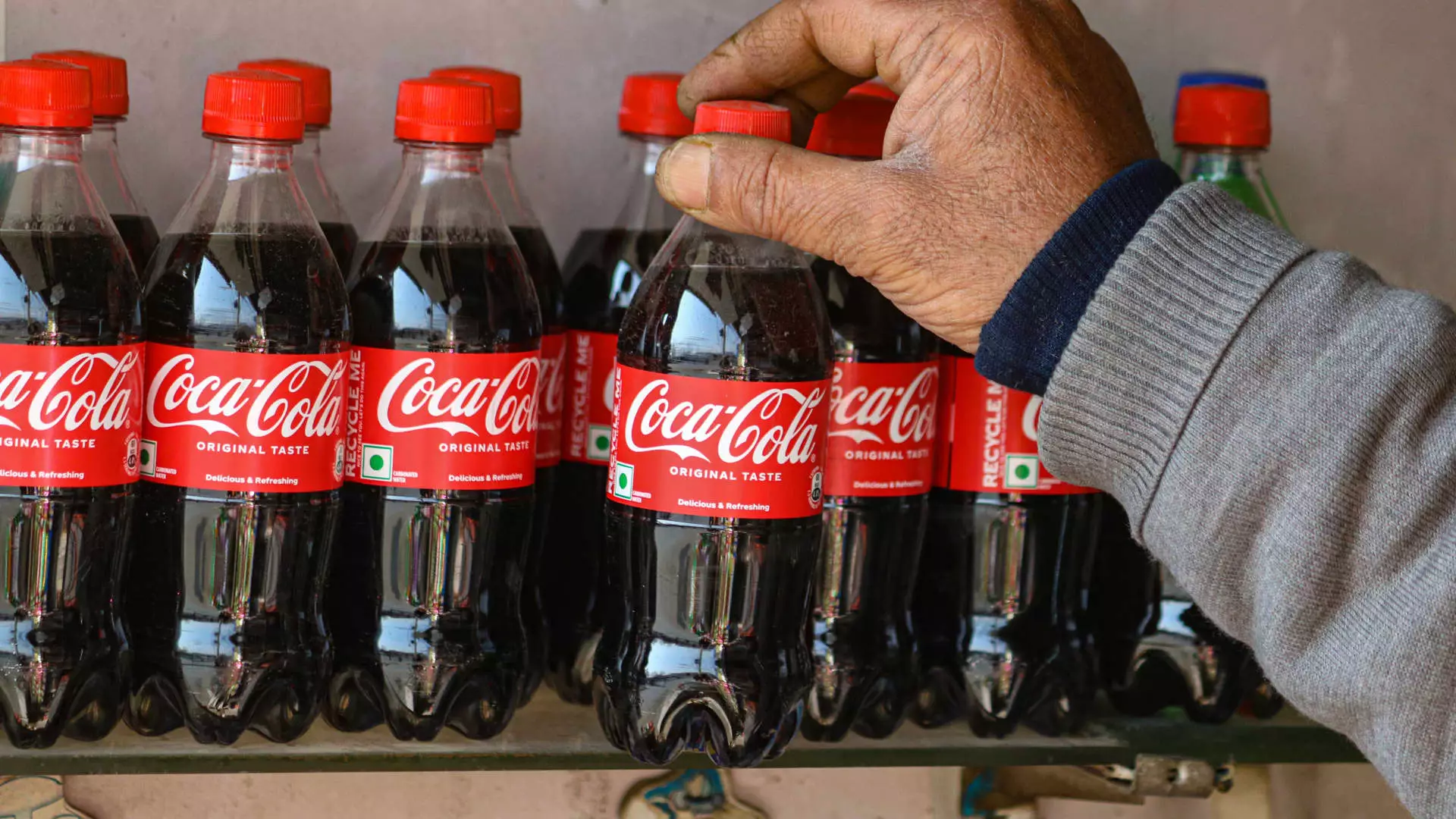In recent years, the dynamic landscape of international trade has significantly affected numerous industries, with the beverage sector notably feeling the pressure. A recent statement from Coca-Cola’s CEO, James Quincey, sheds light on how the company’s packaging strategies may pivot in response to President Donald Trump’s decision to increase tariffs on aluminum imports. This potential shift from aluminum to plastic bottles is not merely a tactical response to cost fluctuations but also reveals the underlying complexities concerning material sustainability, consumer demand, and corporate environmental responsibilities.
Quincey’s remarks during Coca-Cola’s earnings conference call capture the essence of a flexible business model, one that seeks to navigate increasing input costs while keeping products accessible. He stated that if aluminum costs escalate due to tariffs, Coca-Cola would likely enhance its use of PET (polyethylene terephthalate) plastic bottles as an alternative. This adaptation underscores a pivotal aspect of Coca-Cola’s strategic approach: maintaining affordability while ensuring consumer satisfaction, which is paramount in a competitive marketplace.
This strategy, however, raises questions about the long-term implications of a shift toward plastic. While initial cost benefits may be realized by transitioning to PET, the environmental ramifications could be substantial. Aluminum, despite being generally more costly, holds a superior reputation for recyclability and sustainability when compared to its plastic counterpart. With recycled aluminum often finding new life in multiple product forms, pivoting towards PET, which boasts a lower recycling rate, could generate additional environmental concerns that the company must confront.
The decision to raise tariffs on aluminum from 10% to 25% primarily targets countries like China, though the direct impact on Coca-Cola’s supply chains may be moderated by the company’s diversifying sourcing strategies. Quincey acknowledged that while the price hikes in aluminum from Canada could affect costs, their overall effect on Coca-Cola’s extensive operational framework is unlikely to be catastrophic. This sentiment may serve to quell investor anxiety, positioning the company as resilient amidst fiscal fluctuations.
However, what remains crucial is the broader economic context in which these tariffs have been implemented. Changes to trade policy can create an unpredictable market environment, affecting not just material costs but also consumer behavior and spending patterns. For Coca-Cola, there exists a risk that elevated prices—whether from packaging shifts or increased costs passed onto consumers—could deter purchases, thereby impacting revenue. Thus, the company’s capacity to balance pricing, sustainability, and consumer preferences will be critical in the coming months.
Challenges in Sustainability Goals
Despite efforts to manage packaging costs, Coca-Cola has faced severe scrutiny regarding its environmental impact. Environmental advocacy group Greenpeace has labeled the beverage giant the world’s worst polluter for its contribution to single-use plastic waste. Recent adjustments to Coca-Cola’s sustainability targets further complicate its public image; the company has lowered its recycled material content goals from 50% by 2030 to a more tempered 35%-40% by 2035.
This move has drawn sharp criticism from environmentalists who argue it undermines the urgency of addressing plastic pollution and indicates a lack of commitment to meaningful change. Coca-Cola’s dilemma lies in reconciling immediate economic imperatives with long-term ecological responsibilities. As consumers become increasingly conscious of sustainability, the company’s evolving packaging strategies must align with both environmental stewardship and profitability.
The potential shift towards plastic packaging by Coca-Cola in response to increased aluminum tariffs encapsulates a broader narrative of modern business challenges. Companies today find themselves at a crossroads where the economic realities shaped by political decisions intersect with environmental obligations and consumer expectations. As Coca-Cola adapts its strategies, it must remain acutely aware of the implications on its brand reputation and sustainability commitments. Ultimately, the path forward will demand a thoughtful balance between mitigating costs and fostering a genuine commitment to a sustainable future. The decisions made now will likely resonate well beyond the walls of corporate boardrooms, impacting communities, ecosystems, and economies for generations to come.


Leave a Reply